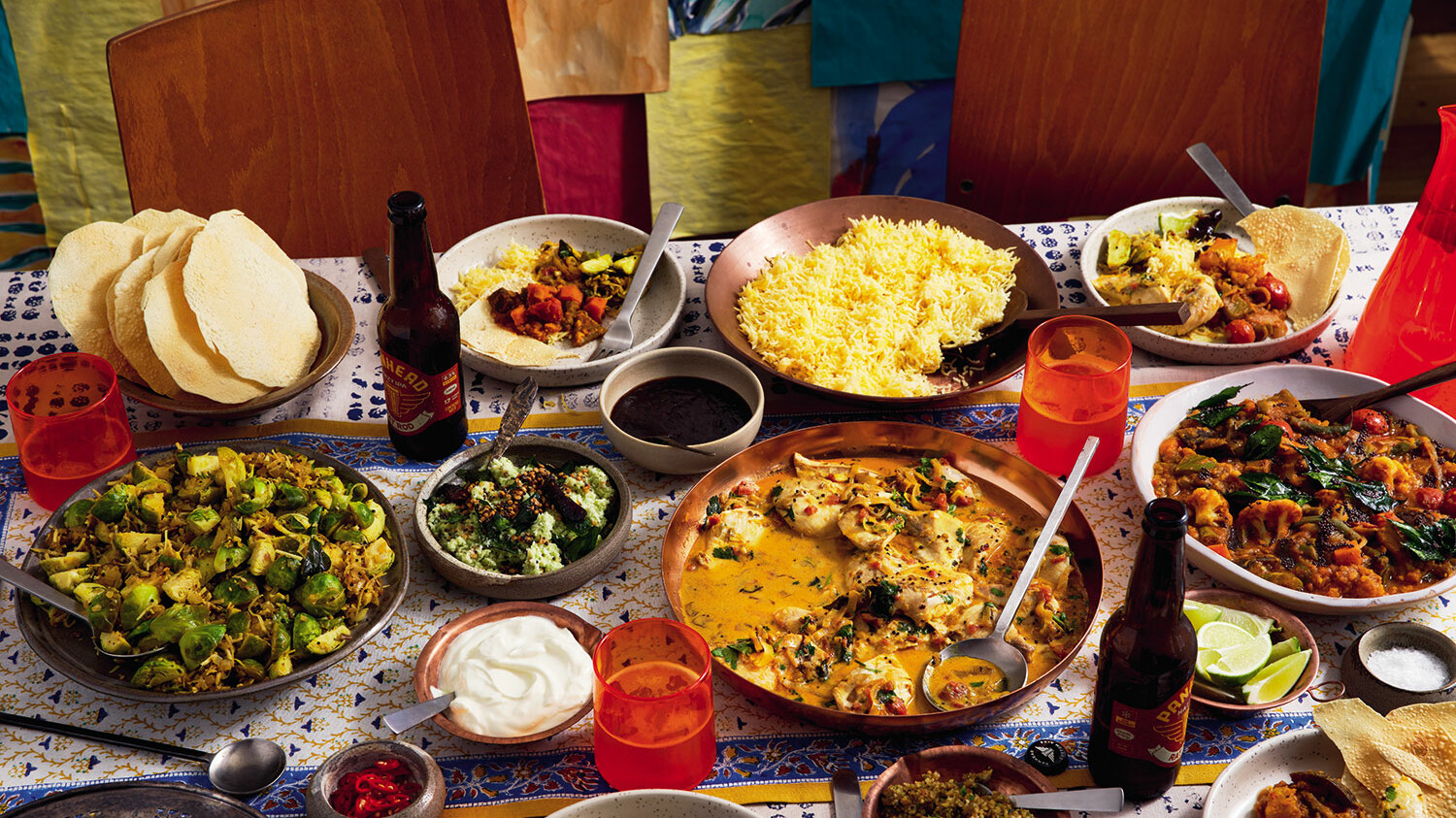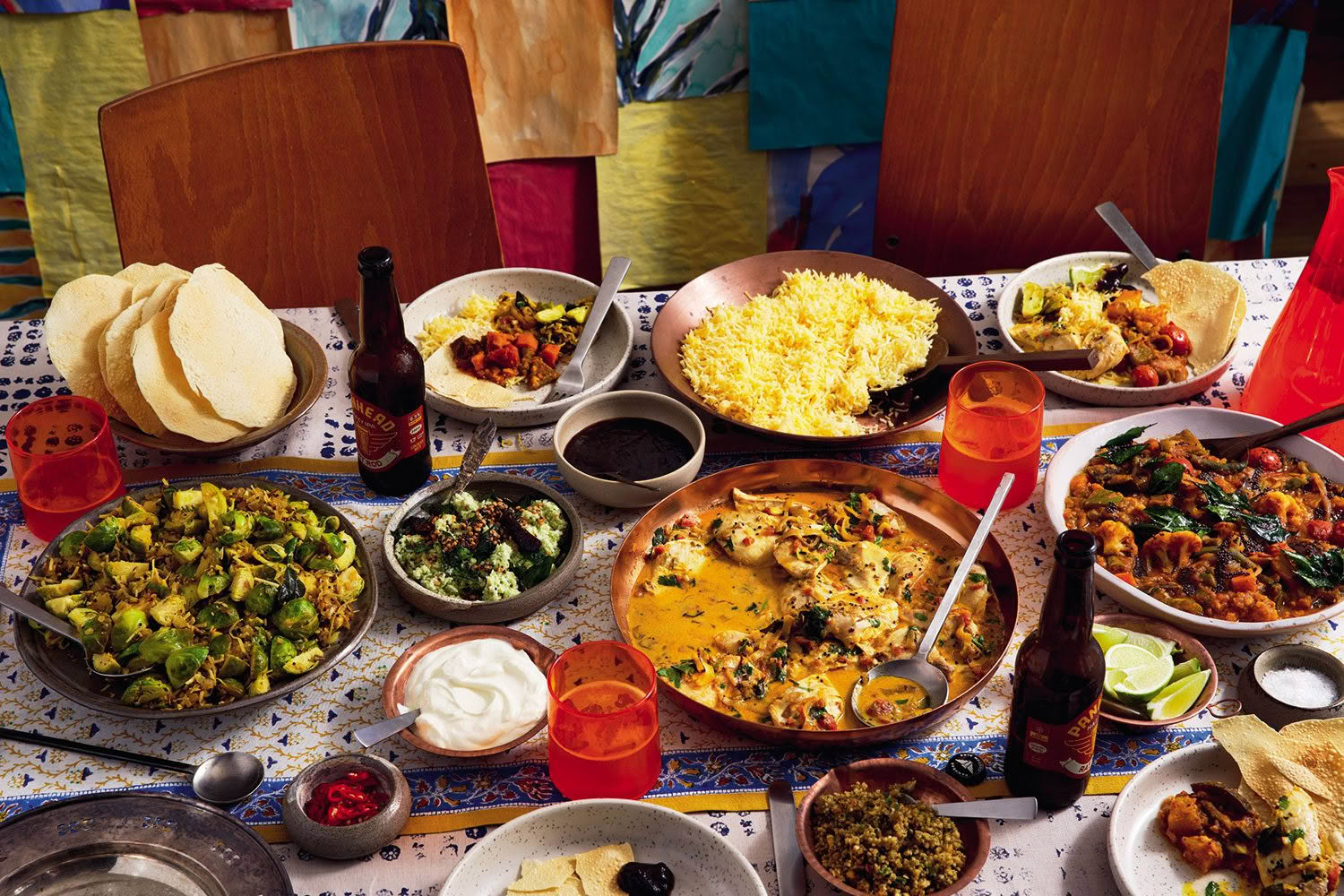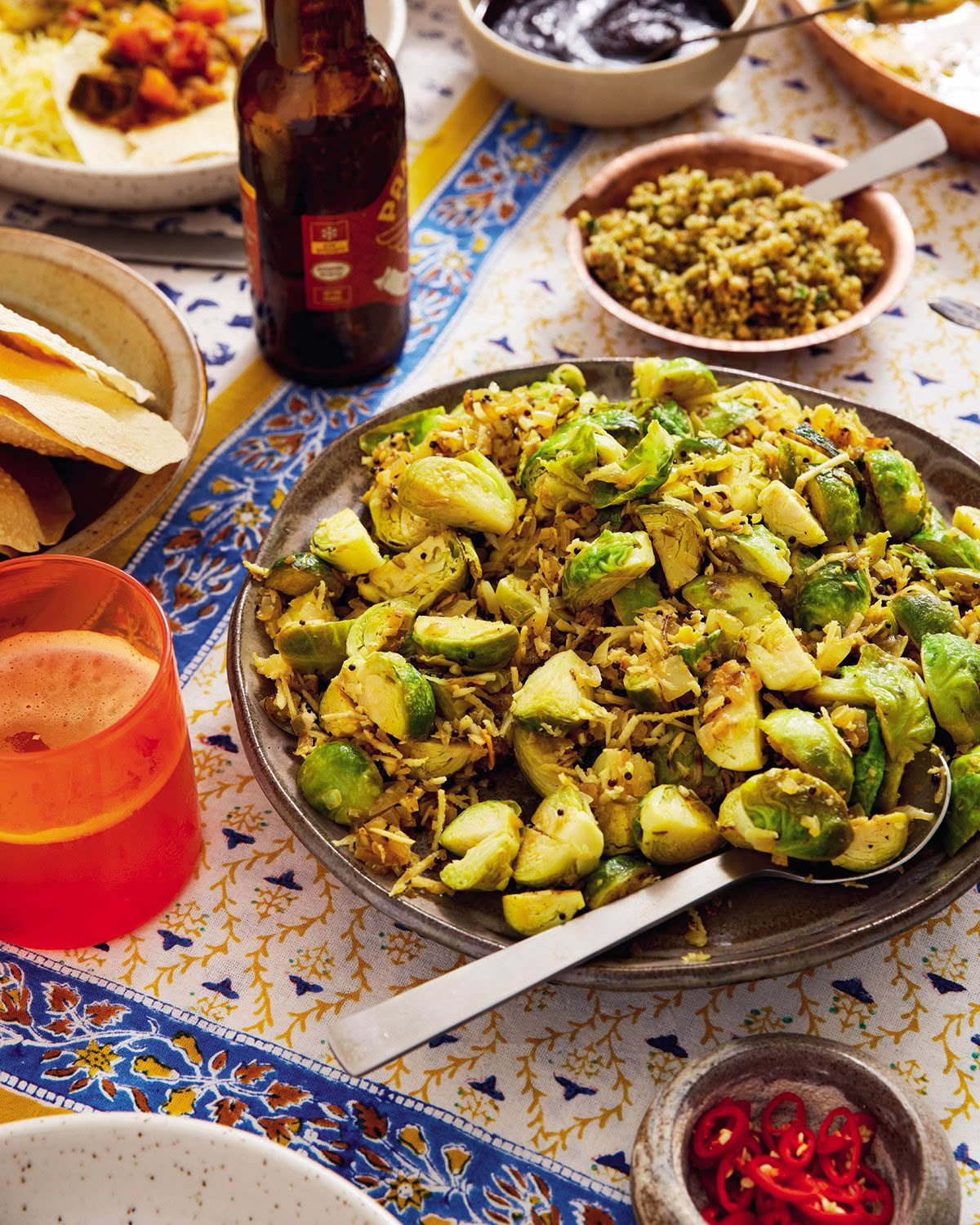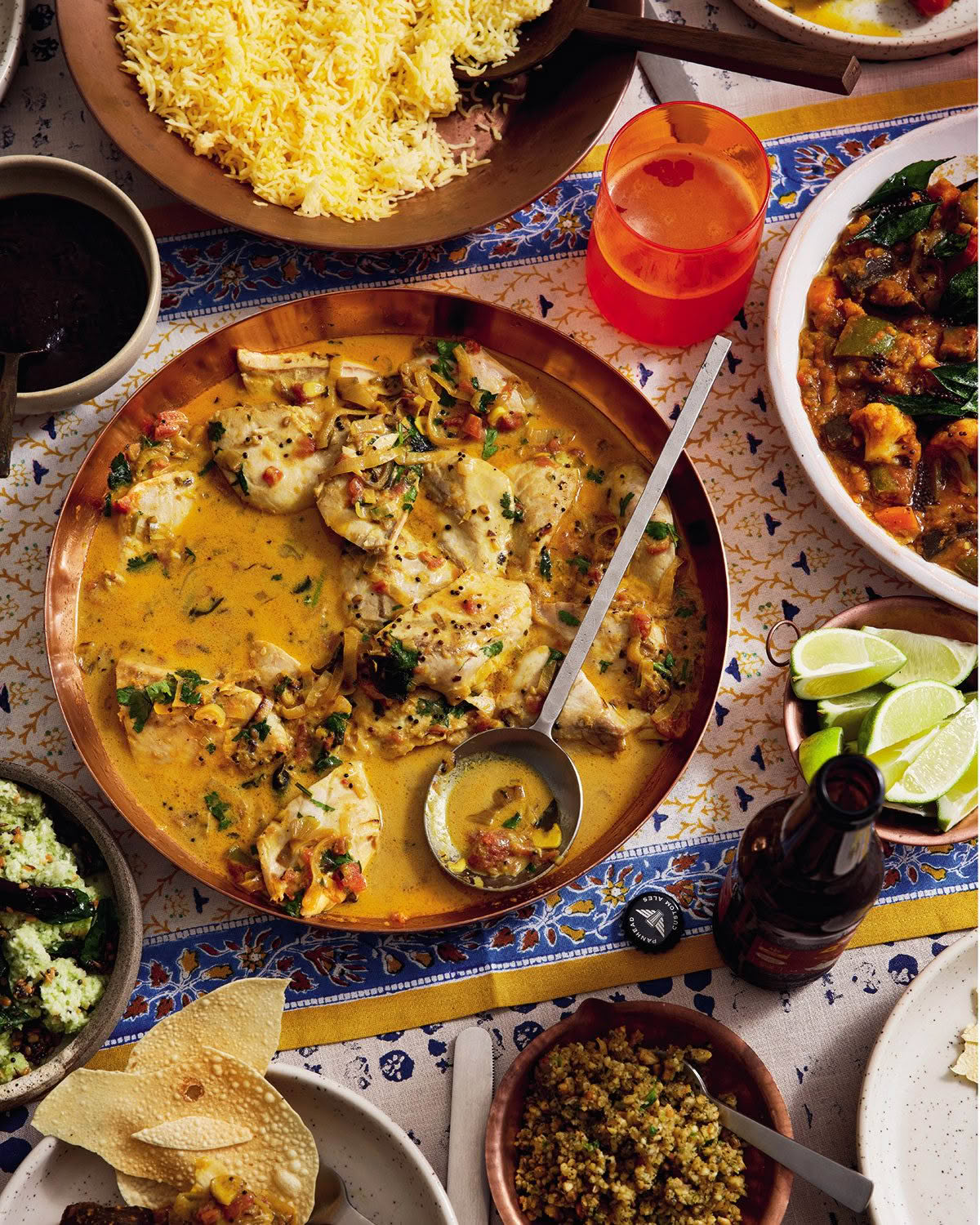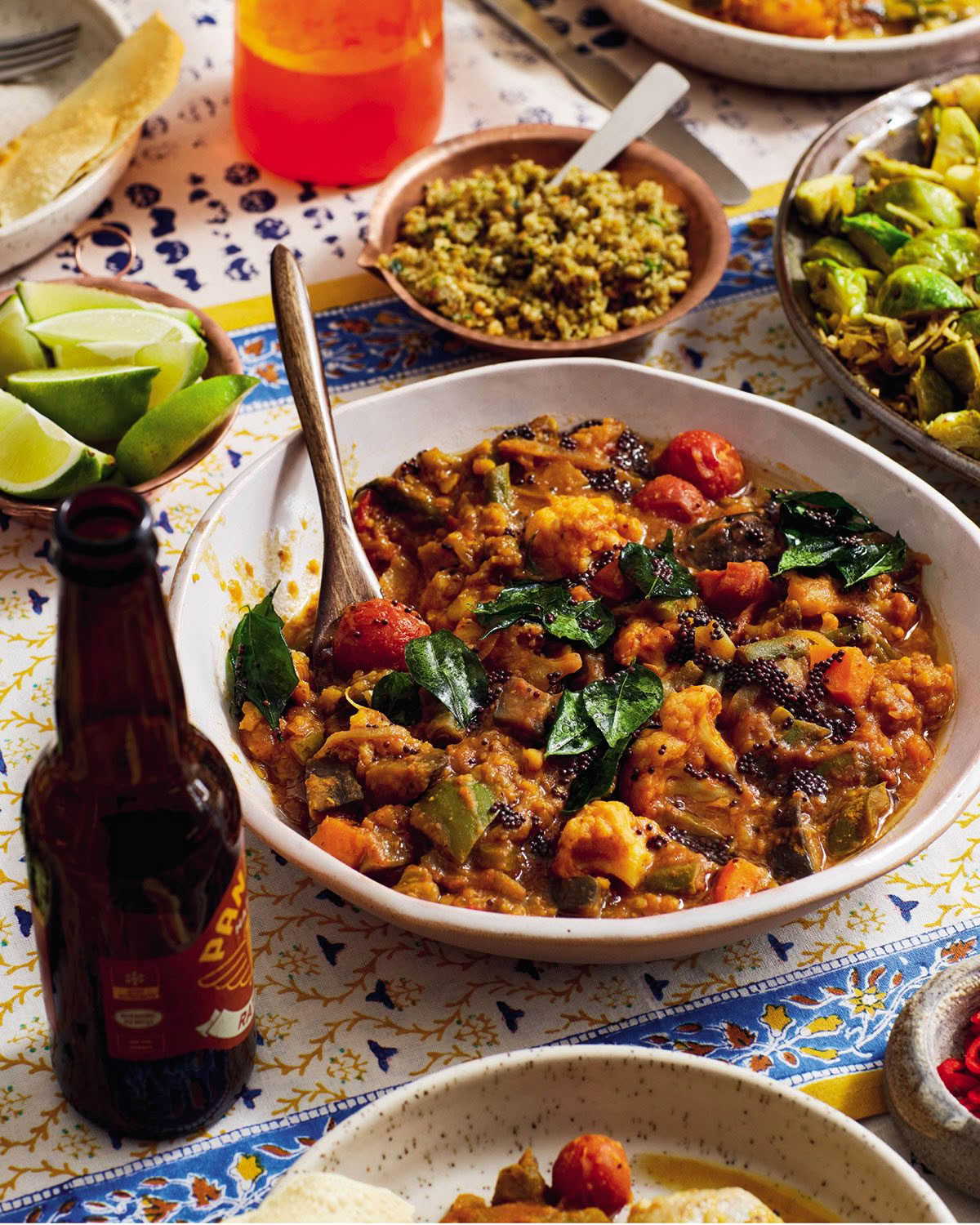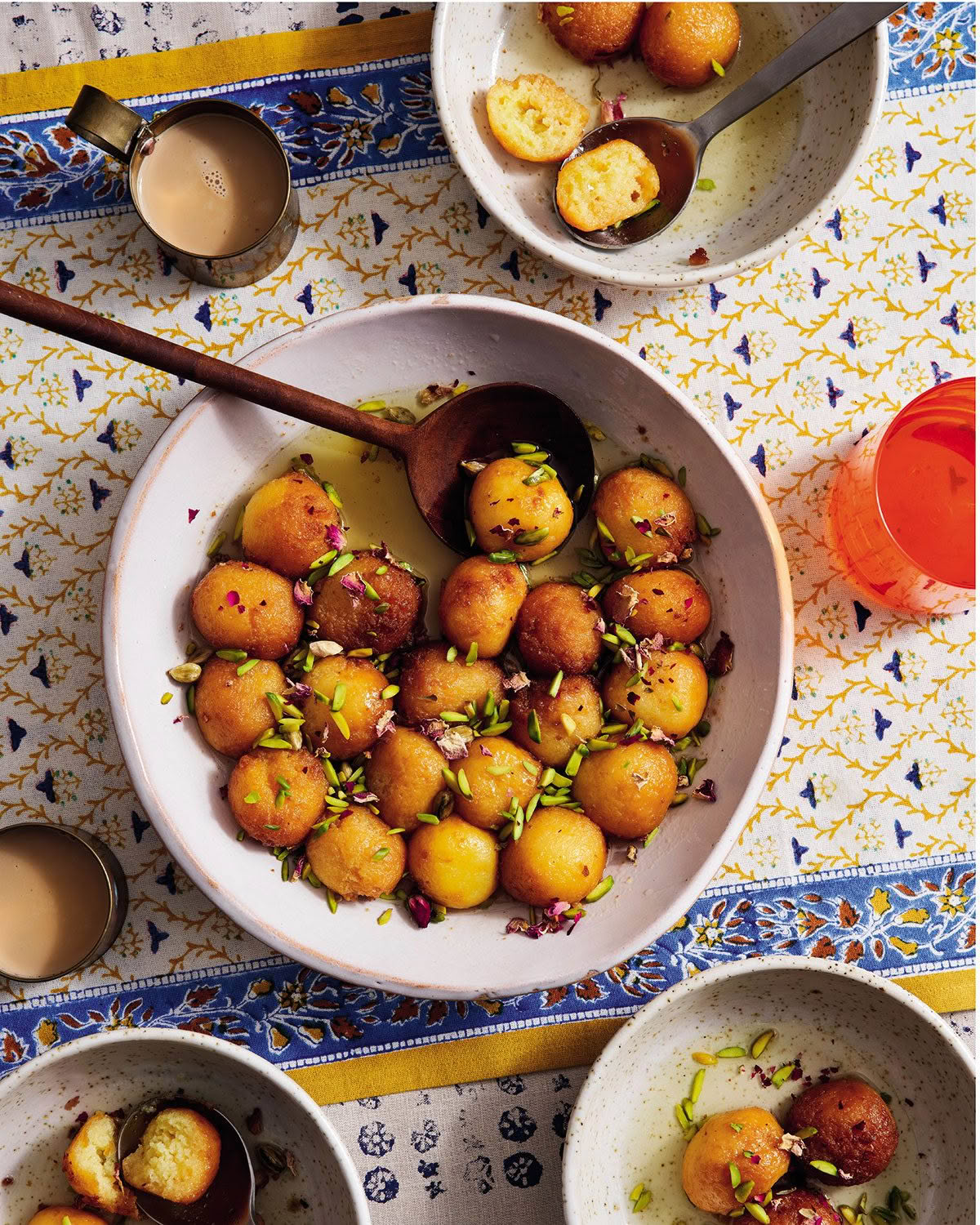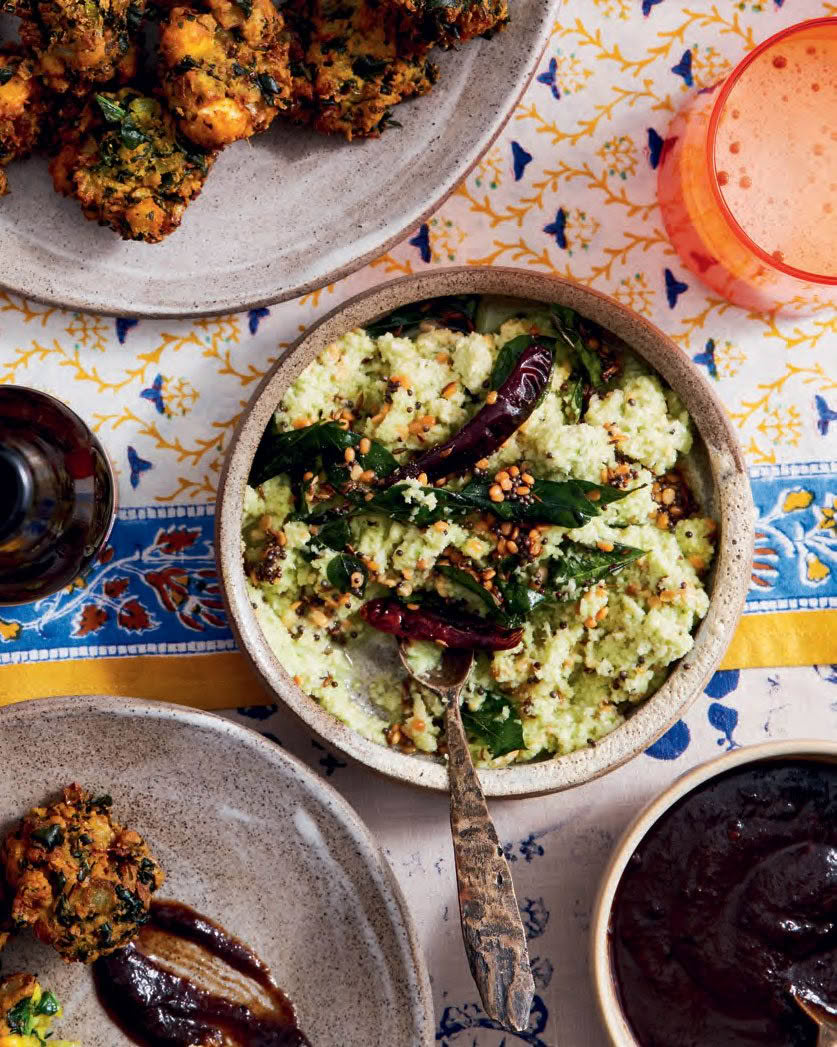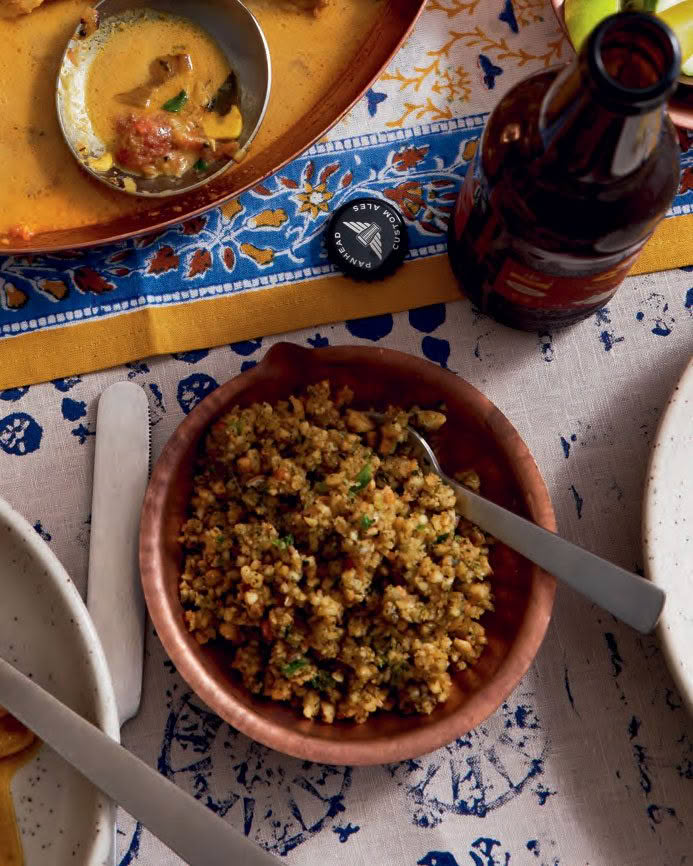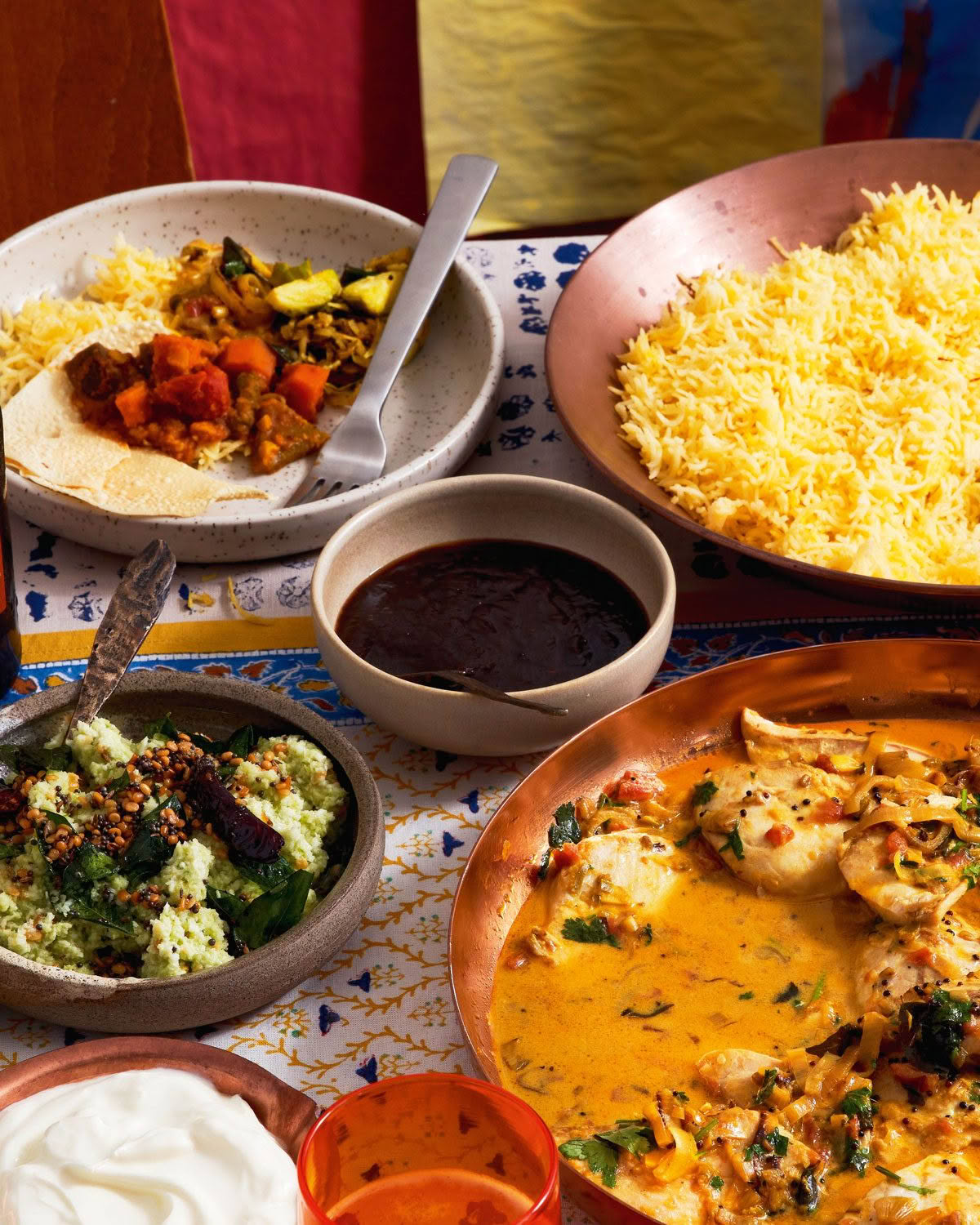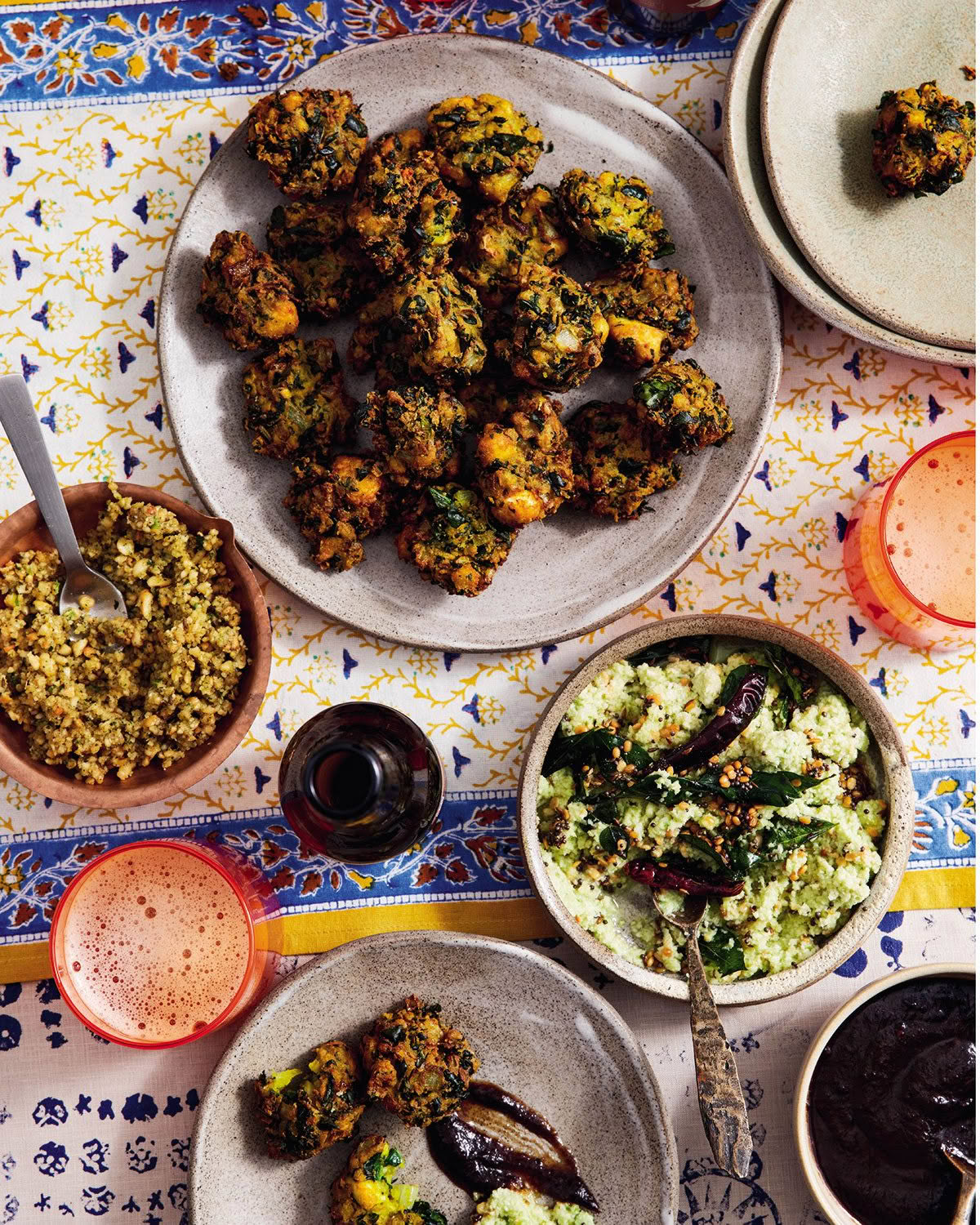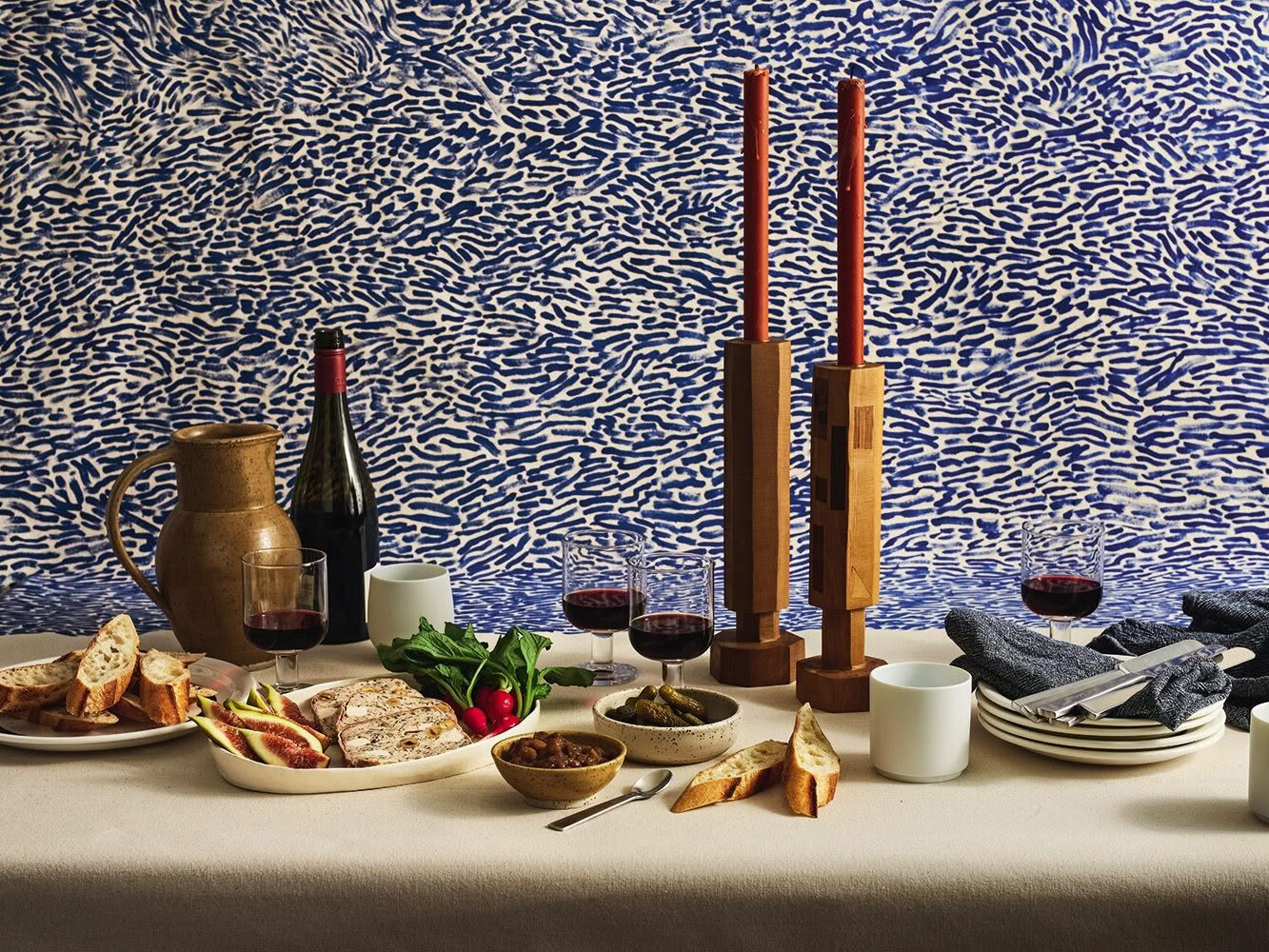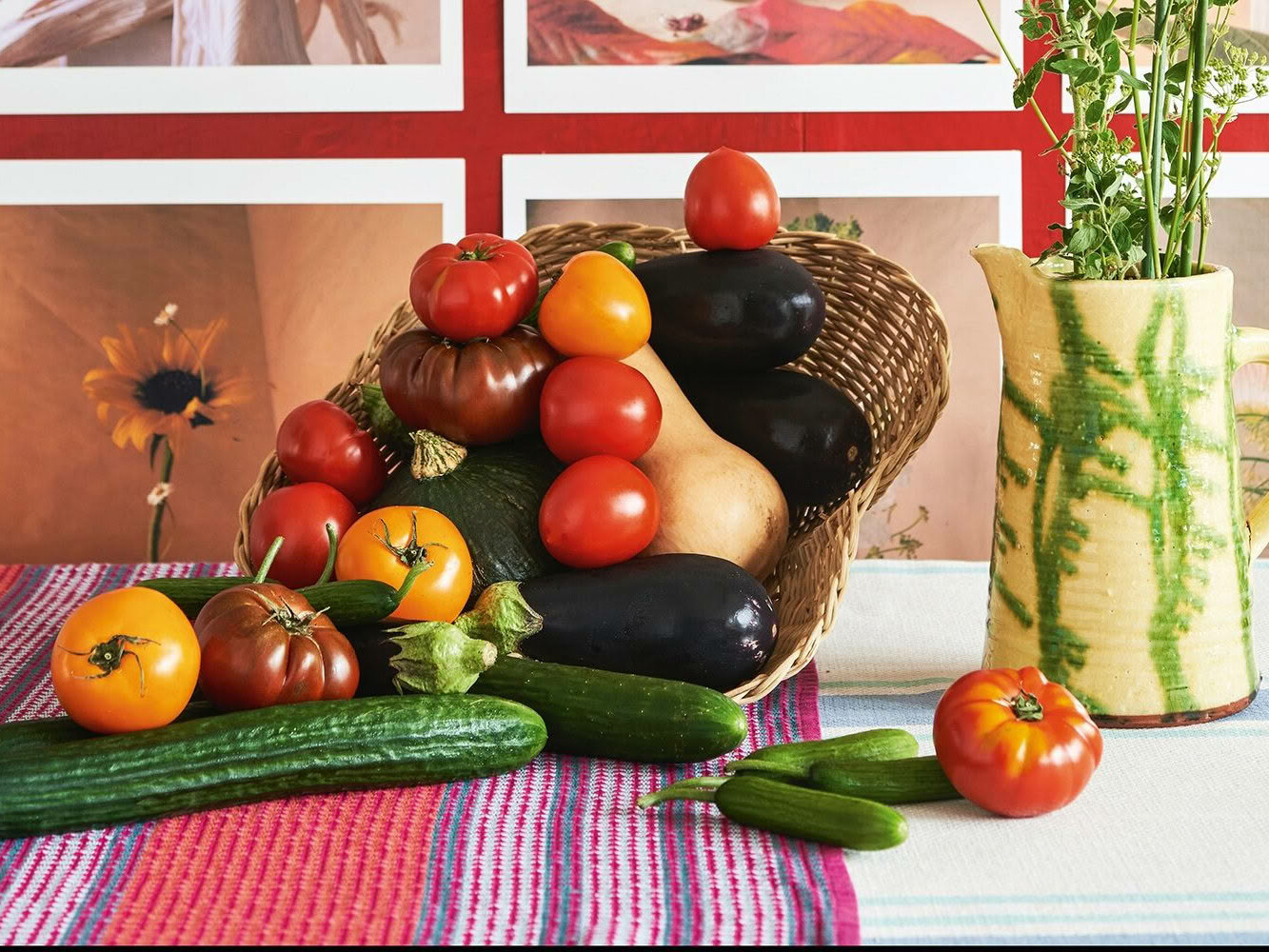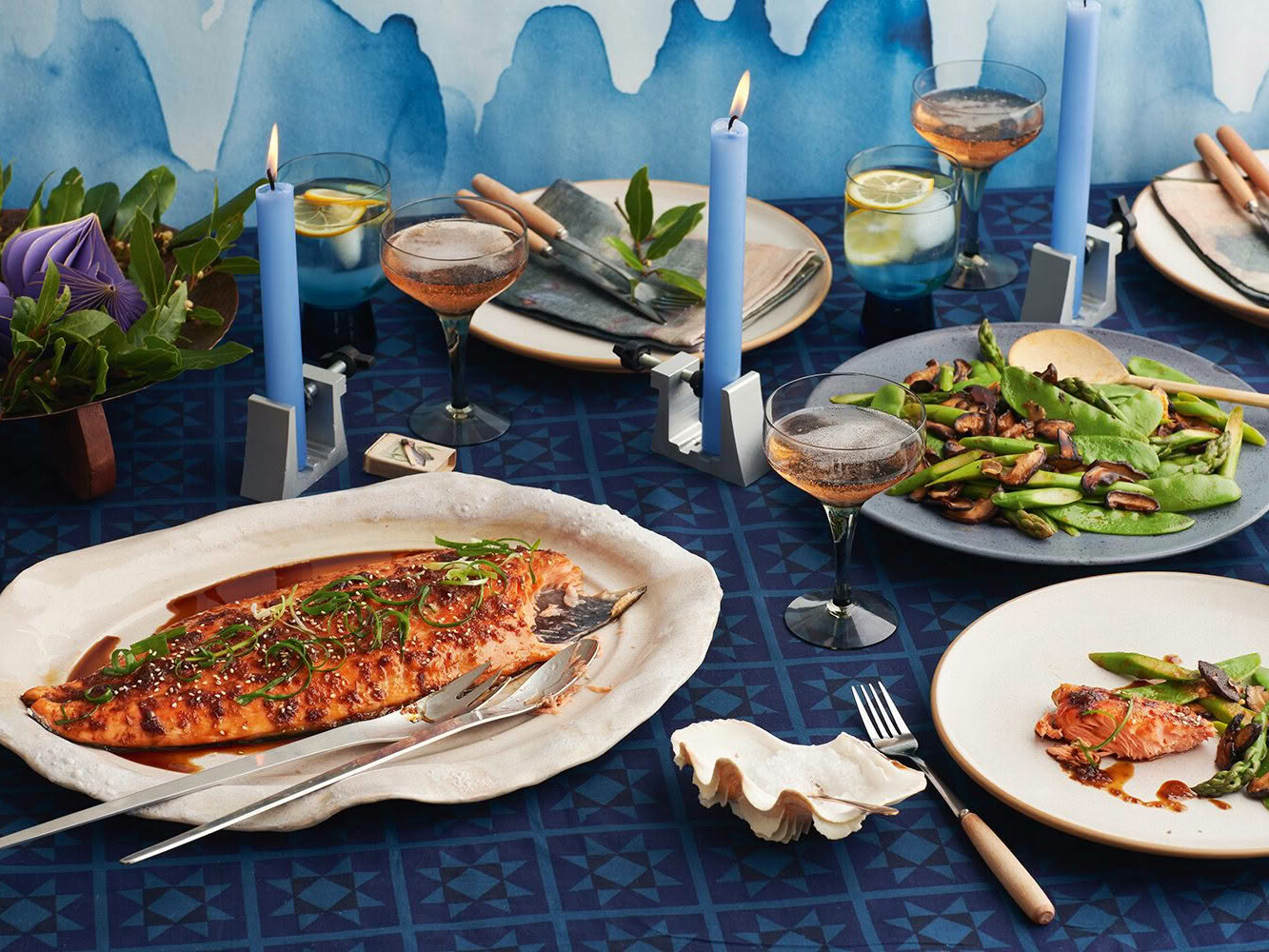Spices, pulses and richly flavoured, layered foods are the first things I think of when it comes to Indian cuisines. The breadth and diversity of the food is astounding, and the very brief visit I had to India almost a decade ago felt like a mere scratch at its multi-faceted surface. For my inspiration here I looked mostly to the southern regions of India; it’s certainly not traditional by any means but more the types of food I’d like to eat in the depths of cooler weather. Some dishes are indulgent, some have plenty of spices and flavours while making the most of seasonal vegetables and, yes, there’s the odd exotic one, too. I’ve designed this as a feast; perhaps it’s one to make as a group and divide up the tasks? It’s also a menu to pick and pull from, especially if you add saffron-infused rice, yoghurt and pappadums to the mix.
NOTES
- Asafoetida is a dried resin which usually comes in powder form. It has a pungent sulphurous aroma and is often used in place of alliums such as onion and garlic especially by Jains who abstain from eating root vegetables and albumins due to their religious beliefs.
- Chana dal are split chickpeas which can be cooked as a dal but in this case are used as a textural component.
- Jaggery is a relatively unrefined sugar from either sugar cane or date palms, giving it a complex molasses flavour. While I have suggested using it, it isn’t essential (and can be tricky to find) and either a palm sugar or brown sugar could be used in its place.
- Urad dal are split black urad beans (the interior is white). In Southern India, it’s used for making idli and dosa batters, but in these recipes it’s used for crunch factor.

